Architecture at the Uffizi Gallery
Tribune, Library, and Niobe Room
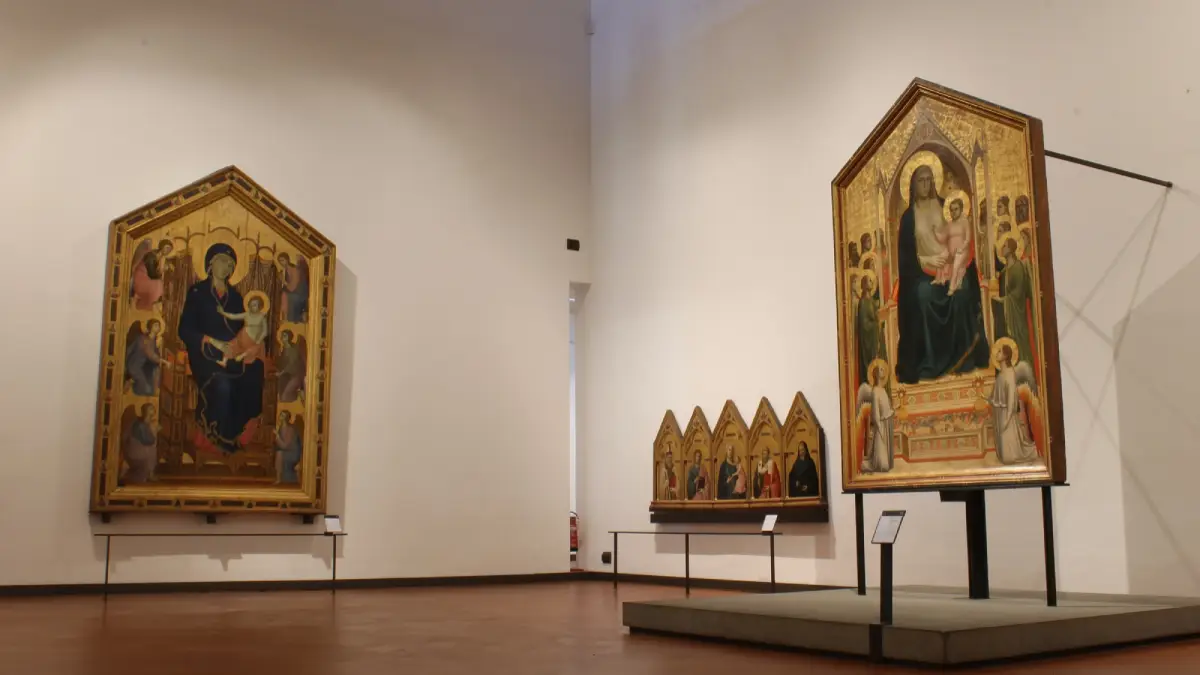
The Uffizi Gallery is more than just an art museum—it’s a masterpiece of architecture in itself.
From Vasari’s visionary palace design to the elegant staircases, historic libraries, and specialized rooms like the Tribune and Niobe Room, every corner tells a story.
In this article, we explore the architectural wonders of the Uffizi that make it just as impressive as the art it houses.
The Uffizi Gallery attracts over 3 million visitors annually, so booking in advance is a smart move. The Skip-the-Line ticket is the most popular and budget-friendly option. The Guided Tour ticket includes expert insights, while the Small Group Tour offers a more personal experience with fewer people.
Uffizi Palace
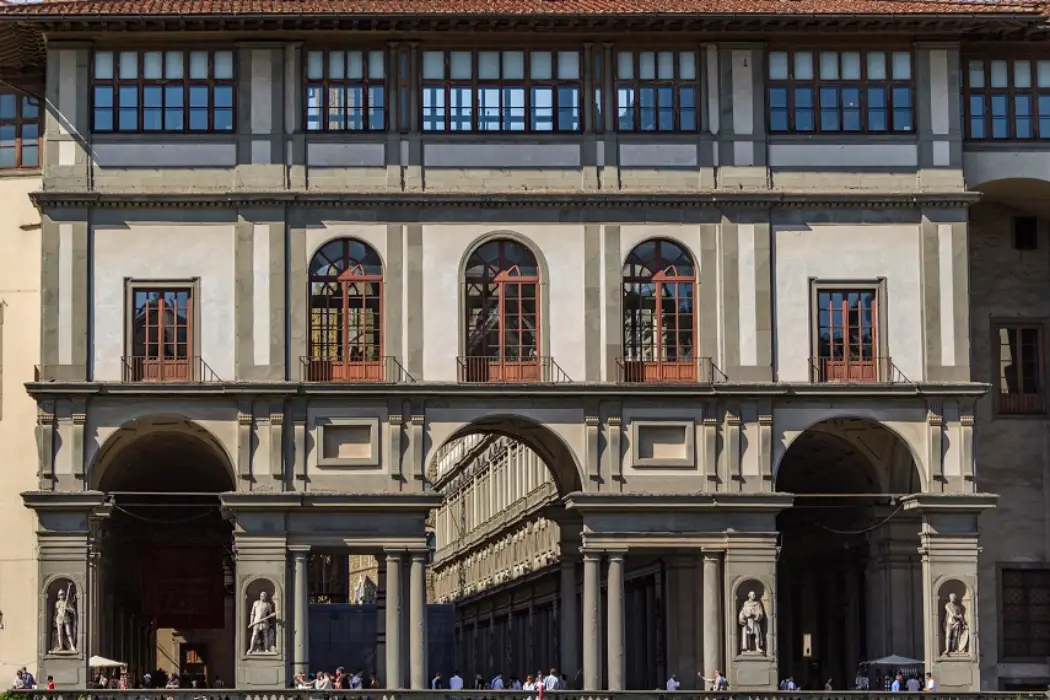
The Uffizi Palace is a stunning example of 16th-century architecture in Florence. Commissioned by Cosimo I de’ Medici and designed by Giorgio Vasari, it was built to house all the city’s government offices. Located by the River Arno, the palace replaced medieval buildings with a bright, modern design. Vasari used a classical Doric style and included smart features like arched walkways, flexible interior rooms, and hidden iron supports. After Vasari’s death, the palace was completed by Francesco I and the architect Buontalenti.
Gallery entrance staircases
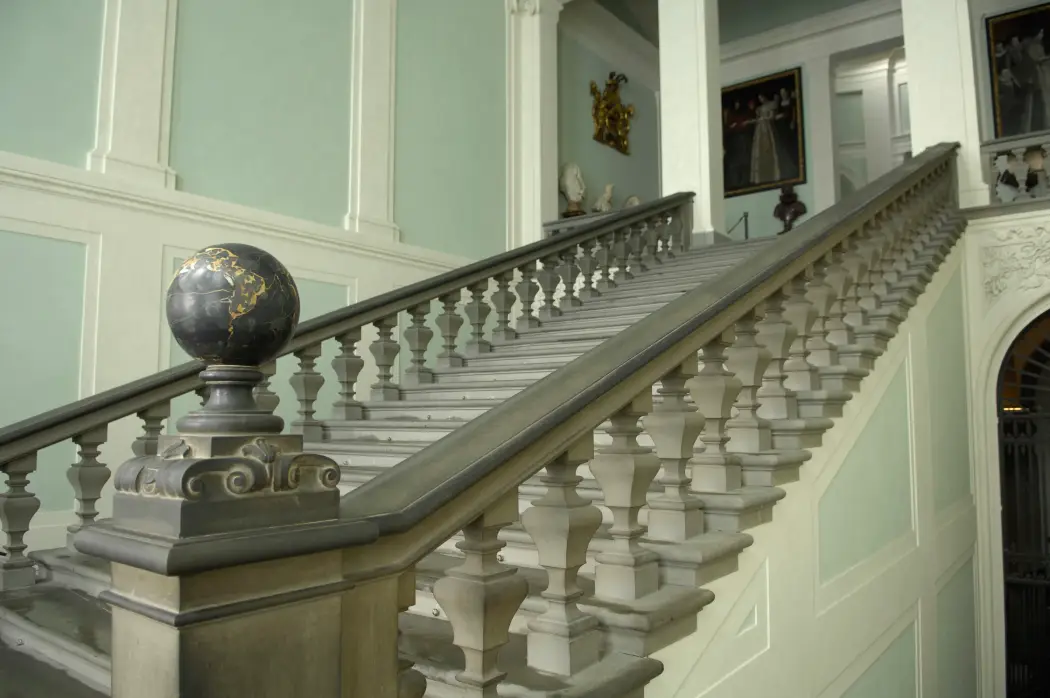
The entrance staircases at the Uffizi Gallery are not just a way to get upstairs—they’re a part of the history and beauty of the building itself. There are two main staircases, each with its own unique style. The first one was designed by Vasari in the Renaissance style, using a grey stone called pietra serena with white plaster. The second staircase takes you up to the Gallery and was added in the 1790s. Just a heads-up: while these grand staircases are beautiful, there are no accessible lifts in the east wing.
Gallery Corridors
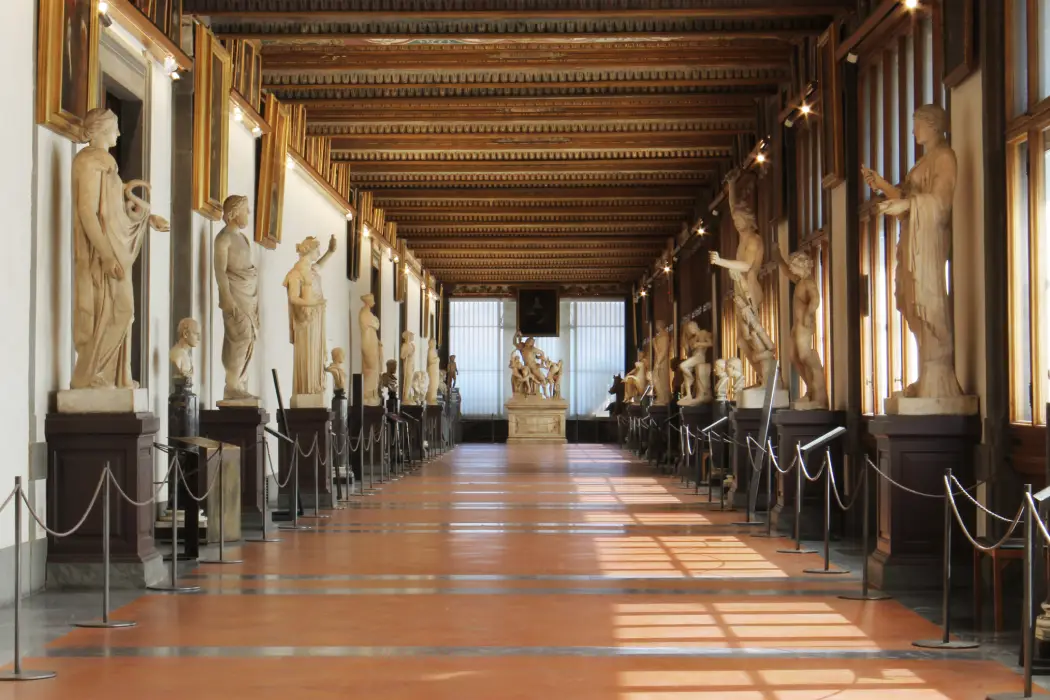
The Gallery Corridors on the top floor of the Uffizi are a must-see. Lined with ancient statues and artwork, they also offer stunning views of Florence—from the Duomo and Palazzo Vecchio to the Arno River and Ponte Vecchio. The beautifully painted ceilings feature frescoes that began in the 1580s, showcasing mythological themes and celebrating the Medici family. These corridors are where the word “gallery” for art collections is said to have originated. While exploring, just note that lifts in the east wing aren’t accessible, so you’ll need to use the stairs to reach this amazing space.
The Tribune
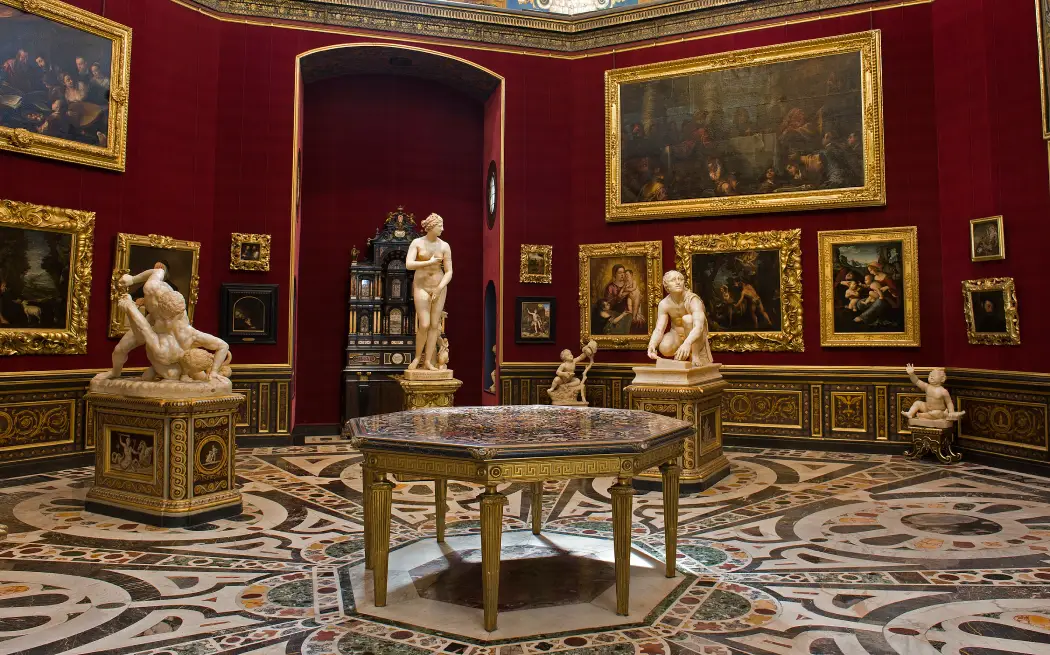
The Tribune at the Uffizi Gallery is a stunning octagonal room built between 1581 and 1583 by Bernardo Buontalenti. It was designed by Francesco I de’ Medici to hold his most prized treasures—art, jewels, rare stones, and natural wonders. Each part of the room represents one of the four elements: earth in the marble floor, water in the pearl-covered dome, fire in the red velvet walls, and air in the open lantern above. Rich in meaning and beauty, the Tribune feels like a magical treasure chest. Keep in mind, though—lifts in the east wing aren’t accessible.
The Uffizi Library
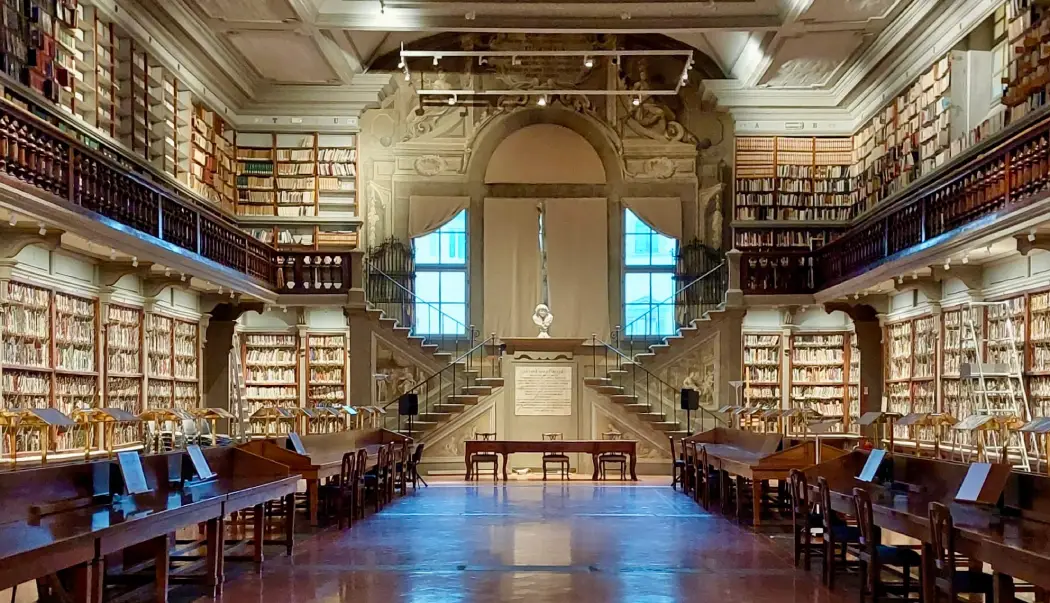
The Uffizi Library, once called the Magliabechiana Library, began with 30,000 books donated by Antonio Magliabechi, the Medici family’s librarian. It was set up in a space that used to be a lively 16th-century theatre. Over time, it was beautifully restored, even uncovering old frescoes like one showing “Knowledge overcoming Lust.” Opened to the public in 1747, it became a key spot for scholars for over 200 years. Today, it holds rare letters, documents, and catalogs about the Uffizi’s history and art. Just a note—lifts in the east wing of the Uffizi are not accessible.
The Royal Post Office
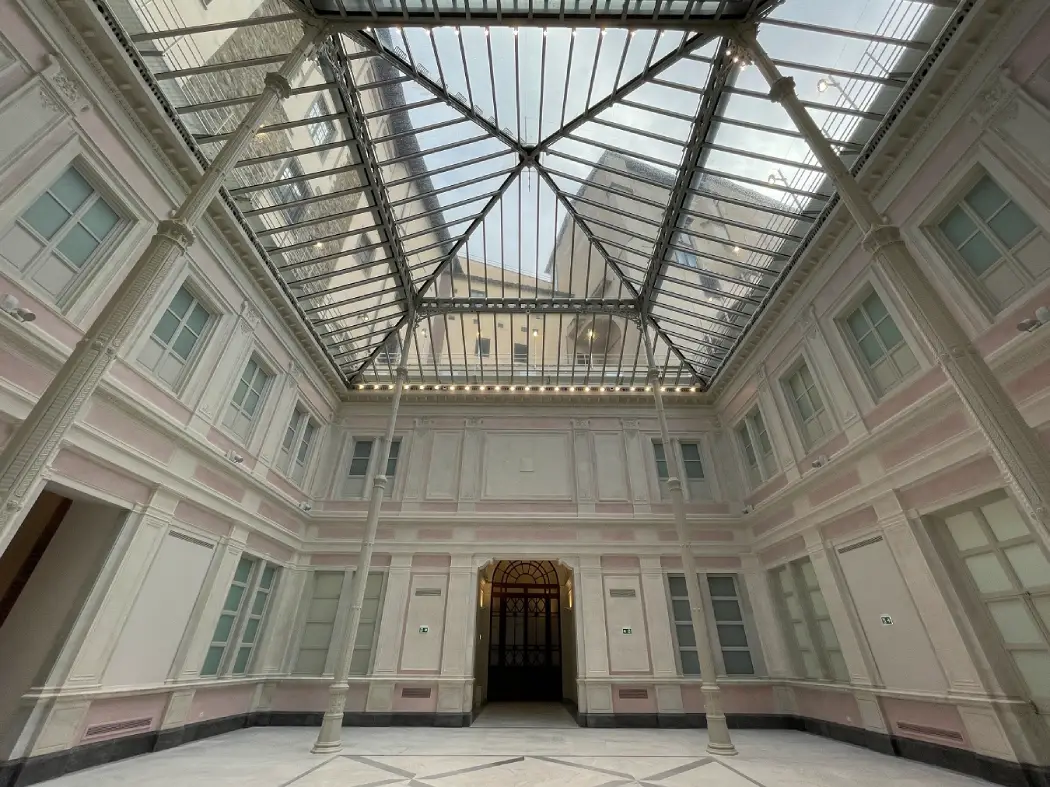
The Royal Post Office, located in the west wing of the Uffizi, was built between 1864 and 1869 when Florence was Italy’s capital. Designed by Mariano Falcini, it featured a modern skylight of glass and cast iron inspired by famous European buildings. The grand interior had elegant columns, tall windows, and detailed decorations. It served as Florence’s post office until 1917. Before this, the site was home to the Florentine Mint, where the gold florin was first made in 1252. Archaeologists have even found parts of the old mint, including furnaces and a vault. Note: lifts in the east wing aren’t accessible.
Specialised Rooms
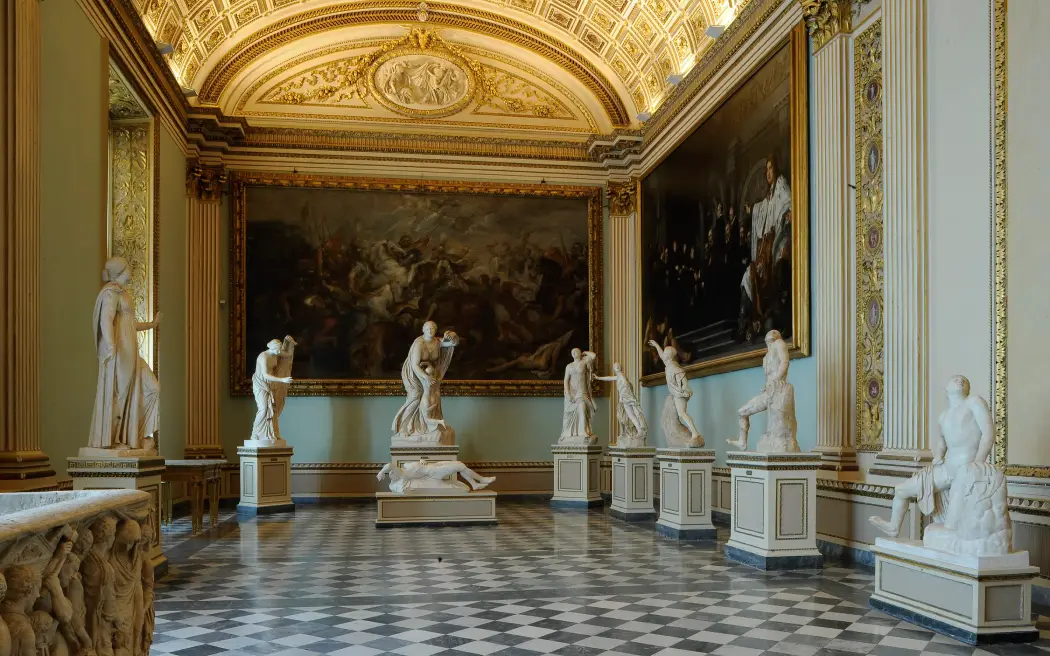
The Uffizi Gallery has several unique rooms created for very special purposes. The Niobe Room, for example, was designed in the 1700s to display a dramatic group of ancient sculptures showing the myth of Niobe. It’s decorated with rich details like stuccoes and ceiling panels, giving it a royal feel. The Primitivi Rooms were built in the 1950s to showcase some of the oldest Tuscan and Florentine paintings, with a simple modern design to highlight the artwork. These rooms serve specific roles beyond just general displays. Note: lifts in the east wing of the Uffizi are not accessible.
